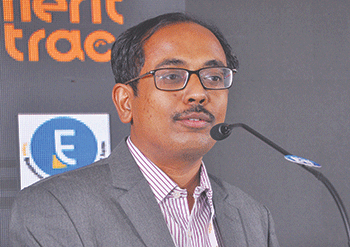Why Indian graduates are unemployable
 India produces over 10 million graduates from 39,000 colleges every year. These are youth who have received 15 years of education in schools and colleges across the country. Therefore, they should be ready to quickly transform into productive employees of the millions of companies, firms and business enterprises in India. Instead a large number of them are unemployed, not because employment is not available, but because they are unemployable.
India produces over 10 million graduates from 39,000 colleges every year. These are youth who have received 15 years of education in schools and colleges across the country. Therefore, they should be ready to quickly transform into productive employees of the millions of companies, firms and business enterprises in India. Instead a large number of them are unemployed, not because employment is not available, but because they are unemployable.
Most of the young men and women who stream out of the country’s higher education institutions are equipped with theoretical learning. They have mugged up history, geography, physics and the sciences. But they know little about the world of work and lack the life skills and capability to get work done.
Meanwhile even as young graduates are desperate for work commensurate with their qualifications, CEOs and HRD (human resource development) managers of India Inc constantly complain about shortages of adequately trained manpower. The shortage of work-ready youth is so acute that most companies and firms have invested massively in training fresh graduates of India’s colleges and universities. Indeed, India Inc arguably incurs the highest employee training costs worldwide, despite which it suffers low productivity. Economists say supply-demand mismatches are self-correcting and establish equilibrium. Why hasn’t this equilibrium been established in India?
All over the world — and in industrial Western countries in particular — academia and industry have strongly symbiotic relationships; they are joined at the hip. Industry works closely with academics in higher education institutions with the latter routinely commissioned to provide research and consultancy services to them. Such cooperation in turn provides academics information and knowledge of the needs, practices and solutions required by industry. Again, knowledge of industry needs and practices enables faculty to revise curriculums and pedagogies. Students get exposure to industry by working on live projects, and most course structures mandate that students work in industry.
Unfortunately, excepting the IITs and a few progressive private engineering and technology colleges, most of India’s universities and colleges are operating in silos with negligible industry connect. Their curriculums have not been updated for decades (with some ‘premier’ engineering colleges still teaching Fortran 77 for computer programming 30 years after it has become obsolete). Their faculties have nil or limited industry experience or exposure, and are completely out of touch with industry’s manpower needs and goals.
Against this backdrop of almost total industry-academia disconnect, it’s important that academia and academics understand that they need to prepare students for jobs of the future — many of which don’t exist today — and teach them that they need to learn as well as unlearn. The IT industry boom of the 1990s took academia by surprise — none of the country’s higher learning institutions were preparing students for IT jobs, thus enabling NIIT, Aptech and other vocational institutes to cash in on the boom, leaving academia way behind. Ditto the BFSI (banking, financial services and insurance) boom of the new millennium and the retail and digital media booms of the past decade. Indian academia is far behind the curve. There’s little emphasis in higher education institutions of the crucial importance of developing problem-solving, analytical thinking and confidence building skills of their students.
The tragedy of higher education in India is that syllabuses and curriculums are infrequently updated and there is minimal emphasis on learning-by-doing. Unfortunately, our academics continue to adhere to lecture-style teaching, and most three-year degree programmes don’t mandate internship and industry exposure programmes, with students enjoying time off while filling in project reports that aren’t completed. The root cause of this malaise is that academia and industry maintain a mere transactional relationship. Top-ranked institutes pitch to industry only for placements, while most government colleges and particularly arts, science and commerce colleges don’t bother at all about industry.
In this connection, it’s important to note that college and university alumni are the best link between academia and industry. Alumni know the strengths of their alma maters and are acquainted with faculty members. They can serve as fund raisers, visiting lecturers and brand ambassadors. Nevertheless in most colleges and varsities, alumni associations are dormant.
Twenty-first century India has the world’s largest child and youth population at a period in history when the number of working age people in the developed industrial countries is declining. But unless our child and youth population is properly educated and skilled to become job-ready for industry, the number of unemployed youth will continue to snowball, posing a great danger to political and social stability. Therefore, there’s a heavy responsibility on higher education and industry leaders to build strong and durable bridges between academia and industry to make our youth employable, and enable the country to reap its demographic dividend.
(Suchindra Kumar is director (education) of Ernst & Young, India)